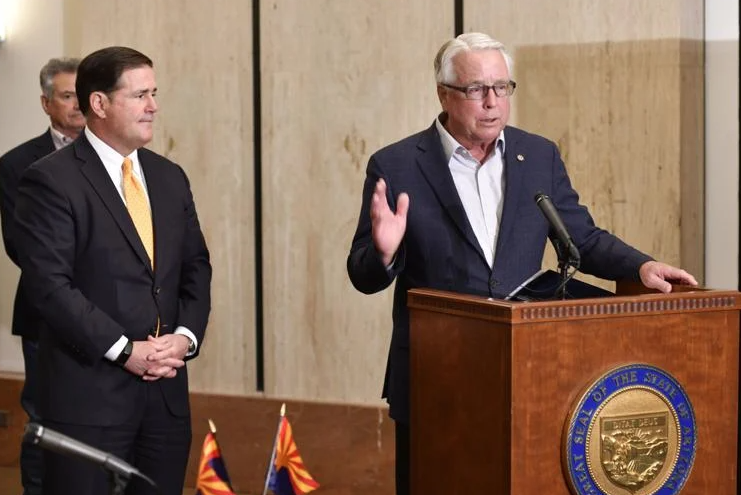By Roland Murphy for AZBEX
Casa Grande Mayor Craig McFarland informed City Council last week that a hoped for $360M in federal Mega grant monies to partially fund the widening of I-10 between Casa Grande and Chandler was not going to happen.
The Arizona Legislature approved $400M for the expansion in 2022. The Mega grant through the Department of Transportation would have provided much of the additional funding needed had it been approved.
The project will add one lane in each direction on the freeway and add new interchanges. With the additional grant funding, officials had hoped to be able to execute all the components of the project in a single or concurrent phases that would have gotten underway this year.
PinalCentral reports McFarland telling Council he received the news from Sen. Mark Kelly’s office and was told the grant request failed because Mega grants give priority to projects with an intermodal transportation focus. According to McFarland, Kelly’s representative also said the I-10 grant request was much larger than the average program project approval by the Federal Highway Administration, which was reported at $110M.
Casa Grande and the Arizona Department of Transportation collaborated to prepare the grant application, and McFarland did not hold back his feelings on the matter when speaking to Council. “I don’t want to sugarcoat that it’s very disappointing. All of the work we did and all of the support we got and everything ADOT sent in. I guess we’ll just have to look at it and hopefully they’ll give us some feedback.”
PinalCentral also quotes McFarland expressing frustration with the intermodal component for grant consideration. “The only indication I got from the representative of Kelly’s office was the comment that we need to incorporate more intermodal transportation projects within the project. Intermodal means alternatives to roads — it’s trails, it’s pedestrian paths. I responded by saying, ‘Are you kidding me? Do you want us to put a bike path on the interstate? Will that get us the $360M?’”
Republican State Rep Teresa Martinez of Casa Grande expressed similar frustration with the grant program’s intermodal focus but pledged she will continue to work with colleagues in the legislature to secure additional funding.
Mega Grant Program and Process
While disappointment at failing to secure funding under the Mega grant program is understandable, given how much of the project would have been covered, surprise at the application’s rejection is not. The U.S. Department of Transportation’s Mega Grant webpage shows a heavy focus on multimodal projects.
The page announces the funding falls under the Infrastructure Investment and Jobs Act and clarifies that the marketing name “Mega Grant” is also known as the National Infrastructure Project Assistance program.
According to the page’s section on funding availability:
Competitive Grant – part of the FY22 Multimodal Project Discretionary Grant Opportunity (MPDG).
The Mega grant program funding will be made available in 2022 under the MPDG combined Notice of Funding Opportunity (NOFO) that will allow applicants to use one application to apply for up to three separate discretionary grant opportunities:
- Mega Grants: known statutorily as the National Infrastructure Project Assistance program (49 U.S.C. 6701)
- INFRA Grants: known statutorily as the Nationally Significant Multimodal Freight and Highway Projects program (23 U.S.C. 117)
- Rural Surface Transportation Grant: (23 U.S.C. 173)
While the list of eligible projects includes projects under the National Highway System, multimodal freight and associated highway projects are featured more prominently.
The Mega grant program has a total budget of $5B for fiscal years 2022-2026. Kelly’s office reported the program awarded nine grants in total for FY 2022, with an average amount of $110M per project.
Information from grant program information and tracking site GrantsOffice.com confirms that the Fiscal Year 2022 awards were approximately $1B. It also says, “The Department will make awards under the Mega program both to projects greater than $500M in cost, and to projects greater than $100M but less than $500M in cost. For each fiscal year of Mega funds, 50% of available funds are reserved for projects greater than $500M in cost, and 50% for projects between $100M and $500M in cost. A 40% match is required.”
The full list of Mega grant recipients for FY 2022 has not been published, but a Dec. 21, 2022, DoT press release said they are expected to be announced early this year.

